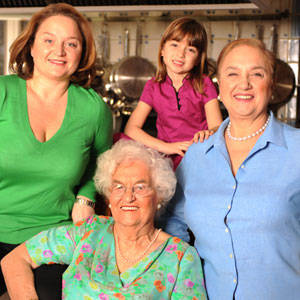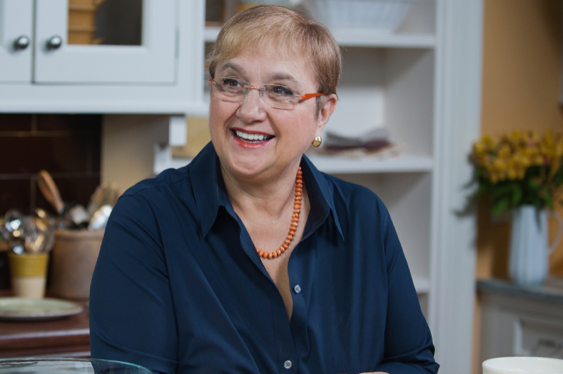Everything You Need to Know to Be a Great Italian Cook
This is your thirteenth published book to date. How did you decide which recipes to include in it?
It is a collaborative process between our editor, my daughter Tanya, and me. The recipes were chosen to match the theme of the book. Some of my books have been about Italian-American cuisine, some about regional Italian food, while this last one is really my most comprehensive one to date, with lots of cooking tips and techniques, detailed descriptions of products, and advice on how to use and store them. I also show how to make substitutions in recipes when you don’t have a particular ingredient and how to substitute one protein for another. Technique is very prominent in this cookbook, and I address in detail when one should consider whether to braise, roast, boil, grill, or sauté meat, fish, or vegetables.
In this comprehensive book of over 400 recipes, I included many of the traditional dishes like Bolognese sauce, linguine with clam sauce, pasta e fagioli, and a basic marinara sauce. I included some of my lifetime favorites and some brand new dishes.
Lastly, I believe that every cookbook needs the right balance of recipes: a good selection of simple and easy dishes; holiday favorites and some recipes that are more complex for special occasions or when the cook just wants to try something new and different. A book should have a balance of appetizers, first courses, second courses, vegetables, and desserts and each category needs to be well represented.
You say that you want to teach readers how to choose and use ingredients well. Would you say that the book is kind of an extension of yourself in your reader’s homes when they are not watching you on television?
Yes, I would like the reader to know that by using this book, it’s like having Lidia in the kitchen. It’s a kind of tutorial by Lidia. I want the reader to think about my suggestions when they are shopping for products, picking out produce, meat, and fish, and I want them to be conscious of the seasons. Once home, I hope they think about the best techniques and know how best to handle and store their products. The reader should be guided by my recipes but also free to modify them according to their own personal tastes.
You work so closely with your daughter Tanya, both on your brand as well as in the writing of this book. Did she always show an interest in cooking?
Tanya is an excellent cook. Her personality affords her the best of both worlds, as she is both very creative and incredibly organized, something that is optimal for someone in the kitchen.
She is very passionate about this business and really takes on everything she does with an incredible amount of dedication. I love working with her; she brings a lot of energy and innovation to our projects.
Let’s talk about your maternal grandmother Rosa, the one person who inspired and taught you how to cook. Do you have a favorite dish of hers that you include in this book?
My Nonna Rosa loved her garden, and I loved being with her in her garden and then going to the local market to sell our produce and eggs. I really enjoyed harvesting the eggs from the chickens and ducks, so a simple frittata with wild asparagus brings me right back to my grandmother's table (This recipes is from the new book, page 111).
What is one piece of advice you would give to someone who is stepping into the kitchen for the first time?
Be prepared before you start cooking. Make sure you have all the ingredients you need, the proper instruments, a good work surface, and good knives. Always clean up as you go! Invest some time beforehand to understand the recipe and the techniques used in the recipe. Once you have become familiar with the recipes and have mastered some cooking techniques, you can begin to move away from it a little bit and begin to make it your own.
How important do you think food is when it comes to reinforcing an identity with our home country?
Food is an integral part of who I am, and it identifies me as an Italian, but food is an important part of any culture. Chinese, Indian, and Mexican are all good examples of food-centric cultures that we can all identify when eating their food, and each has particular about how to cook and enjoy their cuisines while sharing it all with family and friends. Food is used to celebrate, express grief and emotions, and it brings people closer together.
If you were sitting at home, hungry and you could make anything that you wanted, what would it be, and why?
Simple...spaghetti with white clam sauce. If there are no clams in the house, I’ll just make a spaghetti with garlic, oil, and peperoncino









































i-Italy
Facebook
Google+
This work may not be reproduced, in whole or in part, without prior written permission.
Questo lavoro non può essere riprodotto, in tutto o in parte, senza permesso scritto.